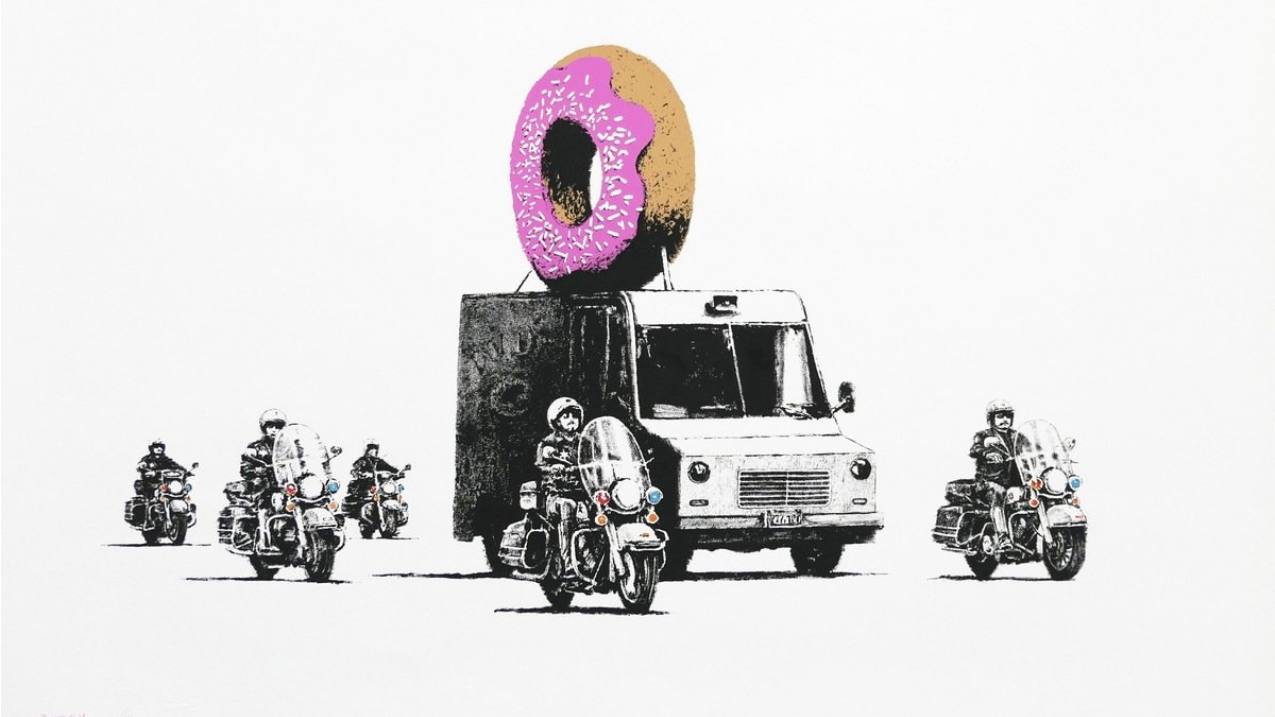Red Eight Gallery’s art expert Julian Usher weighs up whether contemporary art deserves a place at the table.
After “Great British Spraycation” put Banksy back in the spotlight over the summer, demand for the iconic street artist’s work shows no signs of abating. During H1 2021 a total of 27 Banksy originals sold at auction for more than US$80 million worth according to the website “Banksy Explained”. That’s the highest total ever achieved by Banksy to date, with the top performer being “Game Changer” which sold at Christie's London in March 2021 for £16,758,000.
These big sums might sound impressive, but does this mean that investors and FAs should seriously consider including contemporary art in their portfolios? Let’s consider the main pros and cons of art investment from the perspective of the retail investor.
Impact Of COVID-19
Before the COVID-19 pandemic, Deloitte’s 2019 Art & Finance Report estimated the total value of the art and collectibles market at US$1.7 trillion, with projections to reach US$2.1 trillion by 2023. While there’s no question the pandemic has impacted auction and gallery sales, the market is expected to recover promptly according to the latest Art Basel and UBS Global Art Market Report:
“Global sales of art and antiques fell from $62 billion in 2008 to $39.5 billion in 2009 but returned to its pre-crisis levels by 2010. The bounce-back was fuelled by a stimulative fiscal and monetary response similar to what we’ve seen this year. We expect the art market to take a similar path forward.”
Interestingly, the report also found that the pandemic had actually increased 66% HNW individuals’ desire to collect fine art, with 33% reporting a significant increase. Banks and other big corporate collectors did reduce their expenditure, but still 78% of the International Association of Corporate Collections of Contemporary Art (IACCCA)’s 56 members have continued to acquire art during the pandemic.
Strong Historic Track Record
Over the past couple of decades auction turnover for the contemporary art sector has risen dramatically from just $92 million in 2000 to $1,993 million in 2019. That’s equivalent to a 2,100% increase. According to the Citi Global Art Market chart, the sector has also performed well against the stock market over this period, delivering an annualised return of 14% over the last 25 years as of December 2020 against 9.5% for the S&P 500. Citi’s 2020 Global Art Market Report notes that even during the first seven months of 2020 Contemporary Art averaged a 6.7% return, beating all other asset classes.
Investment Windows
As with most other collectibles, contemporary art is not a get-rich-quick scheme. It’s best suited to investors interested in longer investment windows, with most advisors recommending a 5-7 year hold. At Red Eight Gallery we regularly see investors achieve excellent returns over much shorter periods, but I would always advise discussing your goals with an art investment expert to get a realistic projection.
Typical Returns
Value drivers in the art sector include an artist’s reputation, their sales and exhibition history, and the general availability of their work on the primary and secondary markets. Emerging artists who are still building their presence in the market can generate higher returns in the long run, but more established or “blue chip” artists are the preferred option for risk-averse investors since they hold their value better during downturns.








